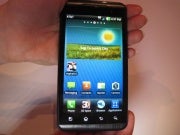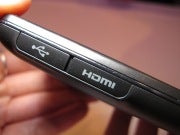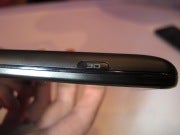
And so it begins again. BGR has an exclusive scoop from an "unproven" (ooh!) source: Apple is in talks to buy Barnes & Noble, the country's last remaining national bookseller. As BGR points out, the acquisition would get Apple B&N's digital books and other publications (which it might conceivably want) and Nook hardware (which it surely doesn't), along with hundreds of retail outlets which it could either shutter or convert into Apple Stores. (Enormous Apple Stores! Usually located conveniently close to existing Apple Stores!)
Here's a bit of deep insight from another BGR source (the story doesn't say if it's a proven or unproven one):
It also almost makes too much sense for Apple to do this, said another source of ours, mentioning that Apple doesn't make moves that appear logical to most outside observers at the time.
Well said. For years, Apple has confounded the rest of us by not buying things that it should clearly be buying. Not purchasing other well-known companies is so core to Apple's strategy that it must have a whole department devoted to non-mergers and un-acquisitions.
We've been over this before, but it's worth a recap:
2003: Apple shows it's not that serious about this music thing after all when it doesn't buy Universal Music!

2004: The world wonders if Steve Jobs has lost all common sense when Apple doesn't buy Pixar, a company Jobs already runs!

2005: Industry watchers the world over do a double-take in unison when Apple doesn't buy TiVo!

2006: Apple tips its hand to its disinterest in the phone market by making a strategic decision not to buy Palm!

2006: It makes no sense at all, but Steve Jobs' large ownership stake in a legendary Hollywood company doesn't lead to Apple buying Disney!

2006: For reasons lost to history, Apple doesn't take the easy route to success in gaming by buying Nintendo!

2006: Bizarrely, it turns out that Eric Schmidt didn't join the Apple board so Apple could buy Sun!

2007: I still recall my shock and disbelief when I learned that Apple would not be buying AMD!

2008: Steve Jobs' legendary fondness for Flash inexplicably fails to result in Apple buying Adobe!

2008: Two years after its mysterious refusal to buy Nintendo, Apple once again spurns the Japanese by not buying Sony!

2009: Apple makes a rare strategic misstep when it ultimately decides not to buy Yahoo!

2009: Apple's continuing disinterest in gaming is confirmed when it doesn't make a dramatic bid to buy Electronic Arts!

2009: Apple's WWDC is a memorable one as Steve Jobs doesn't announce "one more thing:" Apple is buying Twitter!

2009: In a move surely made primarily to confuse us all, Apple does buy Lala.

2010: With unprecedented boldness, Apple doesn't use its huge stockpile of cash buy EA, Sony, Netflix, Facebook, or Disney -- yes, simultaneously!

2011: Apple's careful consideration of a Hulu bid continues to result in...nothing!

Now, take this for what it's worth -- remember, I'm not a professional analyst -- but a careful reading of history indicates that the news of Apple's discussions with Barnes & Noble can lead to only one outcome: Apple not buying Barnes & Noble. Like BGR says, it's simply too logical to happen.
More other news:
Tagcloud: Apple's history , Apple Not Buying Things , Hp EliteBook 8530P akku , Hp 530 akku , Msi Wind U100 akku
















